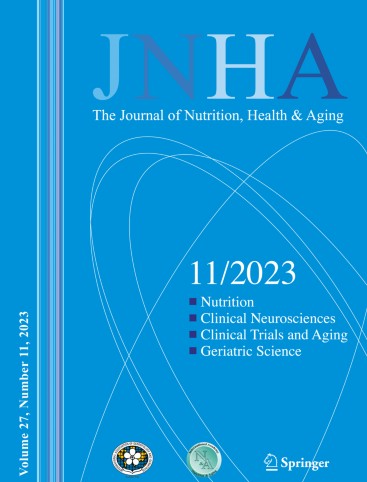急性卒中患者颞肌厚度与功能结局的关系:荟萃分析和GRADE方法
IF 4
3区 医学
Q1 GERIATRICS & GERONTOLOGY
引用次数: 0
摘要
背景:急性脑卒中患者肌肉减少症与预后不良相关。虽然颞肌厚度(TMT)和颞肌面积(TMA)已经在各种情况下进行了研究,但它们与脑卒中预后的关系尚不清楚。方法为了研究TMT和TMA作为脑卒中后预后预测因子的有效性,我们对PubMed、CENTRAL和Embase数据库进行了全面检索,以确定截至2024年10月31日发表的相关研究。对颞肌预测因子的汇总估计进行了荟萃分析,并使用分级推荐评估、发展和评估(GRADE)方法评估证据质量。该荟萃分析包括15项研究,并揭示TMT和TMA与脑卒中患者的功能结局和吞咽困难风险相关。具体而言,功能预后较好的患者TMT值较高(平均差[MD] = 0.84 mm, 95%可信区间[CI] = 0.55-1.13, I2 = 45%)。同样,功能预后较好的患者TMA值也较大(MD = 65.99 mm2, 95% CI = 0.41-1.06, I2 = 85%)。卒中发病时较低的TMT值与吞咽困难风险增加相关(MD = 1.63 mm, 95% CI = 0.74-2.52, I2 = 50%)。亚组分析显示,TMT与功能预后之间的关联在50岁或以上的个体和亚洲人群中更为明显,性别之间没有显著差异。根据GRADE评估,证据的确定性从低到中等。结论stmt和TMA可作为脑卒中患者功能预后的参考指标。本文章由计算机程序翻译,如有差异,请以英文原文为准。
Association between temporalis muscle thickness and functional outcomes in acute stroke: A meta-analysis and GRADE approach
Background
Sarcopenia is associated with poor prognosis in patients with acute stroke. While temporalis muscle thickness (TMT) and area (TMA) have been studied in various conditions, their association with stroke prognosis remains unclear.
Methods
To investigate the validity of TMT and TMA as poststroke outcome predictors, we performed a comprehensive search of the PubMed, CENTRAL, and Embase databases to identify pertinent studies published up to October 31, 2024. A meta-analysis of the pooled estimates of the temporalis muscle predictors was conducted, and the evidence quality was assessed using the Grading of Recommendations Assessment, Development, and Evaluation (GRADE) approach.
Results
This meta-analysis included 15 studies and revealed that both TMT and TMA were associated with functional outcomes and dysphagia risk in patients with stroke. Specifically, patients with better functional outcome had higher TMT value (mean difference [MD] = 0.84 mm, 95% confidence interval [CI] = 0.55–1.13, I2 = 45%). Likewise, patients with better functional outcomes had larger TMA values (MD = 65.99 mm2, 95% CI = 0.41–1.06, I2 = 85%). A lower TMT value at stroke onset was associated with increased dysphagia risk (MD = 1.63 mm, 95% CI = 0.74–2.52, I2 = 50%). Subgroup analyses showed that the association between TMT and functional outcome was more evident in individuals aged 50 years or older and in Asian populations, with no significant differences observed between sexes. The certainty of evidence according to GRADE assessment ranged from low to moderate.
Conclusions
TMT and TMA measurements obtained from routine neuroimaging may serve as useful reference markers for functional prognosis in stroke patients.
求助全文
通过发布文献求助,成功后即可免费获取论文全文。
去求助
来源期刊
CiteScore
7.80
自引率
3.40%
发文量
136
审稿时长
4-8 weeks
期刊介绍:
There is increasing scientific and clinical interest in the interactions of nutrition and health as part of the aging process. This interest is due to the important role that nutrition plays throughout the life span. This role affects the growth and development of the body during childhood, affects the risk of acute and chronic diseases, the maintenance of physiological processes and the biological process of aging. A major aim of "The Journal of Nutrition, Health & Aging" is to contribute to the improvement of knowledge regarding the relationships between nutrition and the aging process from birth to old age.

 求助内容:
求助内容: 应助结果提醒方式:
应助结果提醒方式:


